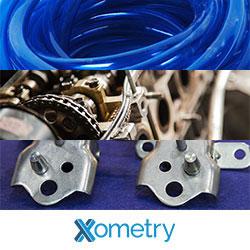Avoiding cross contamination on conveyors
In the twelfth century, workers in the Venetian Arsenal produced naval vessels by moving them down a canal, affixing a new part at each stop. This early version of the production line allowed shipbuilders to produce a ship a day. Since then, the modern assembly line has become much more complex, with stricter regulations, particularly concerning contamination in the food processing industry. Here, Rob Rogers, technical director at materials handling specialist Gough Engineering, looks at how factory managers can avoid products being contaminated as they move through the assembly line.
In a food processing plant, there are different sizes and shapes of products being moved around. From miniscule grains to finished cereal bars, various types of conveyors are used in a factory. Many companies use traditional conveyor belts to move products from one stage to the next.
More complex systems, such as those that feature bucket elevators, are also used to move products vertically in factories. Linear feeders use electromagnetic coil pulses to move product back and forward along a line. Screw conveyors use a rotating helical screw blade within a tube to move liquid or granular materials.
The more complex the conveyor, the more difficult it is to clean. The Machine Directive 2006/42/EC specifies that all equipment used to handle food should be hygienically designed so it can be cleaned to avoid contamination. This means that care should be taken in the design of both the conveying equipment itself and how the equipment is placed into the factory.
Not only are factory managers responsible for eliminating contamination from bacterial growth or other non-food sources that have entered the product stream, it is also in their interest to use conveying equipment that can be thoroughly and quickly cleaned. This means that the system can be efficiently cleaned between batches and avoids contamination from other flavours or allergens.
The European Hygienic Engineering & Design Group (EHEDG) makes detailed recommendations about the design of products to avoid contamination. One of the key principles is to prevent bacterial ingress or growth on product and non-product contact surfaces of the equipment. With this in mind, Gough Engineering produces the Easy Clean conveyor, which is designed to exceed hygiene standards. A removable belt, as recommended by the EHEDG, allows the belt to be quickly disassembled and cleaned.
A belt conveyor with a tubular design means that the conveying surface does not need to be supported by a solid plate. This would increase horizontal ledges and crevices, creating more hidden areas, which are difficult to clean, increasing the possibility for bacteria to grow.
Employees should have full access to the conveyor equipments components to perform a thorough clean. However, in many types of conveyors such as screw conveyors or belt conveyors, they normally use a closed structure to protect workers from the dangerous inner motions of the conveyor. This can be resolved at the design stage by including removable covers to allow access to the internal parts.
During the early stages, food processing companies should not only consider the design of the conveying equipment but also consult with materials handling experts to discuss the layout of the factory. As recommended by the EHEDG, factory managers must avoid contamination from motors or conveyors crossing over each other.
Production lines have certainly moved on since the twelfth century and avoiding cross contamination can seem like an arduous task, but one that is necessary for factory managers. With the assistance of experts in material handling from the earliest stages of factory design, cross contamination can be easily avoided.
Featured Product

